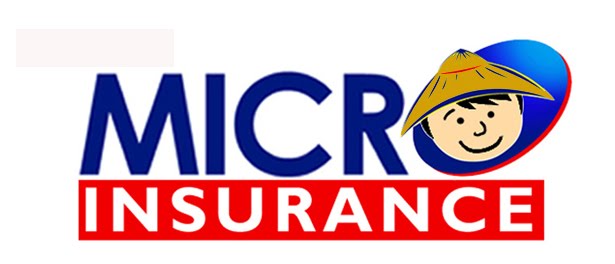Philippine Information Agency
BY: LEONARD T. PINEDA I
Tuesday 1st of April 2014
ILOILO CITY, April 1 (PIA6) --- Over a hundred stakeholders and institutional partners in Western Visayas were educated on alternative dispute resolution on microinsurance (ADReM) through a seminar held recently at the Smallville21 Hotel here.
In a media release, Insurance Commission (IC) Deputy Commissioner for Financial Services Ferdinand George Florendo said that they have been going around the country presenting the latest circulars by the IC with respect to consumer protection for microinsurance clients particularly the low-income Filipinos.
“The objective of the seminar was to reach out to stakeholders and institutional partners to get feedback, get information, and learn what work and what problems to be addressed,” he said.
The ADReM is a mechanism devised by the Department of Finance – National Credit Council (DOF-NCC) and the IC, together with the Technical Working Group from representatives of insurance associations, stakeholders, including the German Development Cooperation (GIZ), to protect the poor.
During the seminar, participants and partners from the microinsurance industry in Western Visayas were educated on the circulars issued to encourage various insurance providers to develop insurance products for the poor and expand their coverage.
The seminar also emphasized the operational elements of making redress mechanism for microinsurance claims disputes through the Least-cost, Accessible, Practical, Effectively and Timely resolution of disputes (LAPET).
The ADReM circulars are initiatives of the Insurance Commission and the Technical Working Group of ADReM to provide an enabling policy and regulatory environment for microinsurance, primarily for consumer protection.
According to Florendo, the Philippines is being looked at as good practice for microinsurance in Asia. At present, almost 20 million Filipinos out of the 97 million populations are covered by microinsurance.
Meanwhile, Dr. Antonis Malagardis, Regulatory Framework Promotion of Pro-poor Insurance Markets (RFPI-Asia) program director, said they have been working in the country for the last five years to support
and facilitate the process of developing inclusive insurance with the Philippines as a priority.
Malagardis also highlighted the Philippines’ achievement in the last four years with 20 percent of Filipinos covered through microinsurance compared to only three percent in 2008.
“The challenge is not only to increase the coverage further but to make it sustainable in the years to come,” he added. (JCM/LTP/PIA-Iloilo)
- See more at: http://news.pia.gov.ph/index.php?article=2421396329450#sthash.WNRXG7Gg.dpuf
BY: LEONARD T. PINEDA I
Tuesday 1st of April 2014
ILOILO CITY, April 1 (PIA6) --- Over a hundred stakeholders and institutional partners in Western Visayas were educated on alternative dispute resolution on microinsurance (ADReM) through a seminar held recently at the Smallville21 Hotel here.
In a media release, Insurance Commission (IC) Deputy Commissioner for Financial Services Ferdinand George Florendo said that they have been going around the country presenting the latest circulars by the IC with respect to consumer protection for microinsurance clients particularly the low-income Filipinos.
“The objective of the seminar was to reach out to stakeholders and institutional partners to get feedback, get information, and learn what work and what problems to be addressed,” he said.
The ADReM is a mechanism devised by the Department of Finance – National Credit Council (DOF-NCC) and the IC, together with the Technical Working Group from representatives of insurance associations, stakeholders, including the German Development Cooperation (GIZ), to protect the poor.
During the seminar, participants and partners from the microinsurance industry in Western Visayas were educated on the circulars issued to encourage various insurance providers to develop insurance products for the poor and expand their coverage.
The seminar also emphasized the operational elements of making redress mechanism for microinsurance claims disputes through the Least-cost, Accessible, Practical, Effectively and Timely resolution of disputes (LAPET).
The ADReM circulars are initiatives of the Insurance Commission and the Technical Working Group of ADReM to provide an enabling policy and regulatory environment for microinsurance, primarily for consumer protection.
According to Florendo, the Philippines is being looked at as good practice for microinsurance in Asia. At present, almost 20 million Filipinos out of the 97 million populations are covered by microinsurance.
Meanwhile, Dr. Antonis Malagardis, Regulatory Framework Promotion of Pro-poor Insurance Markets (RFPI-Asia) program director, said they have been working in the country for the last five years to support
and facilitate the process of developing inclusive insurance with the Philippines as a priority.
Malagardis also highlighted the Philippines’ achievement in the last four years with 20 percent of Filipinos covered through microinsurance compared to only three percent in 2008.
“The challenge is not only to increase the coverage further but to make it sustainable in the years to come,” he added. (JCM/LTP/PIA-Iloilo)
- See more at: http://news.pia.gov.ph/index.php?article=2421396329450#sthash.WNRXG7Gg.dpuf


